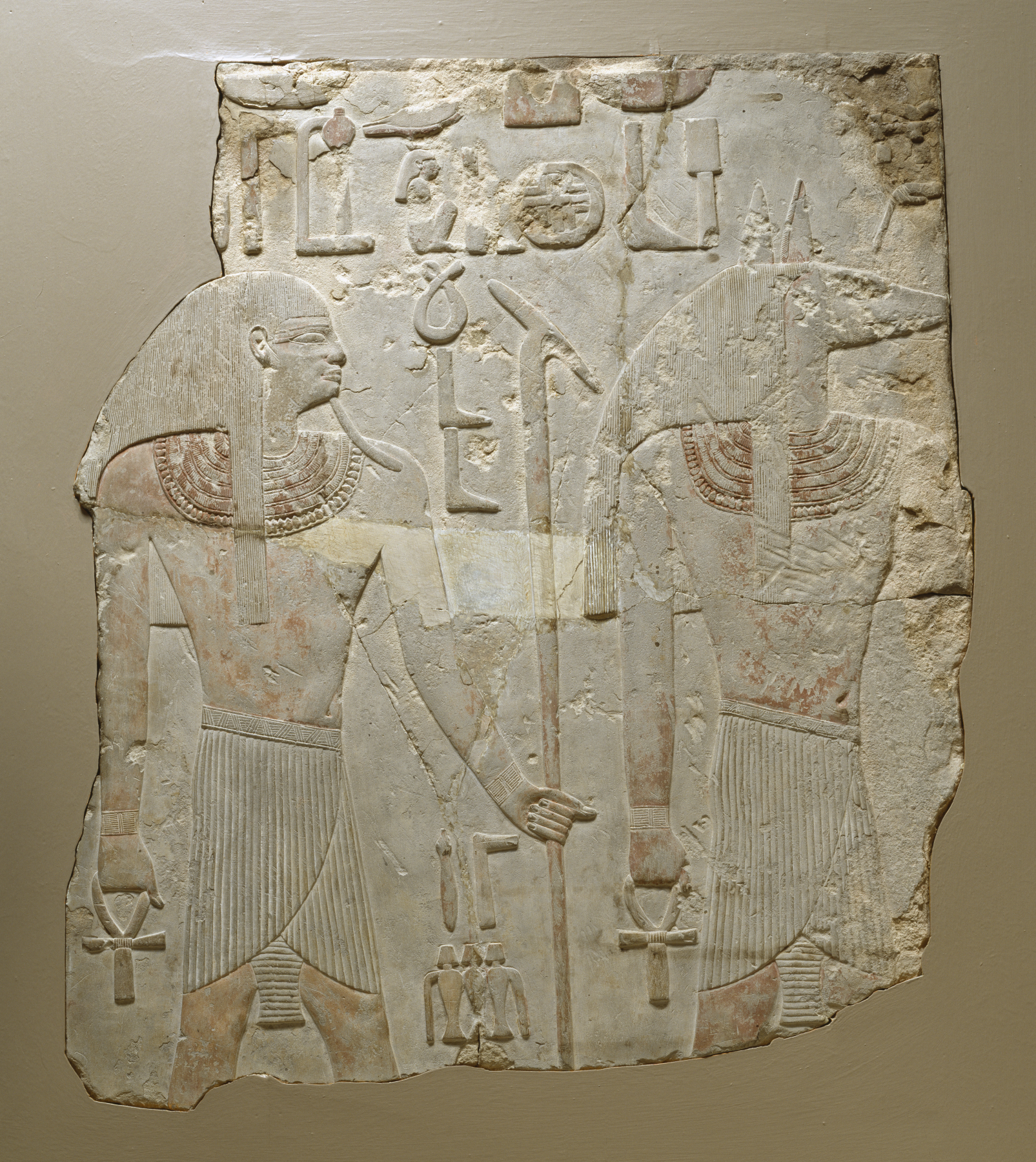Relief: Part of a Procession of Gods with Inscription
(Ancient Egypt and Nubia )
Once part of a scene showing a procession of gods, this fragment shows the jackal-headed-god Wepwawet and the earth-deity Geb holding divine was scepters and ankhs (life signs). Each deity is identified by the hieroglyphs near his figure, and each wears a long wig, broad collar, and shendyit (pleated kilt). The figures' rounded limbs lacking musculature, large eyes outlined with lines running back to the ears, and almost flat eyebrows are elements of the early 11th-Dynasty style.
Provenance
Provenance (from the French provenir, 'to come from/forth') is the chronology of the ownership, custody, or location of a historical object. Learn more about provenance at the Walters.
Joseph Brummer, New York; Henry Walters, Baltimore, 1925, by purchase; Walters Art Museum, 1931, by bequest.
Conservation
| Date | Description | Narrative |
|---|---|---|
| Treatment | loss compensation | |
| 6/15/1964 | Examination | examined for exhibition |
| 6/15/1964 | Treatment | repaired |
| 3/17/1997 | Examination | survey |
| 3/1/2000 | Treatment | cleaned; repaired; loss compensation |
| 2/6/2001 | Treatment | cleaned |
Geographies
Egypt (Gebelein) (Place of Origin)
Measurements
24 x 20 1/2 in. (60.9 x 52 cm);
framed: 30 1/4 x 24 1/2 x 2 1/8 in. (76.8 x 62.2 x 5.4 cm)
Credit Line
Acquired by Henry Walters, 1925
Location in Museum
Accession Number
In libraries, galleries, museums, and archives, an accession number is a unique identifier assigned to each object in the collection.
In libraries, galleries, museums, and archives, an accession number is a unique identifier assigned to each object in the collection.
22.90


